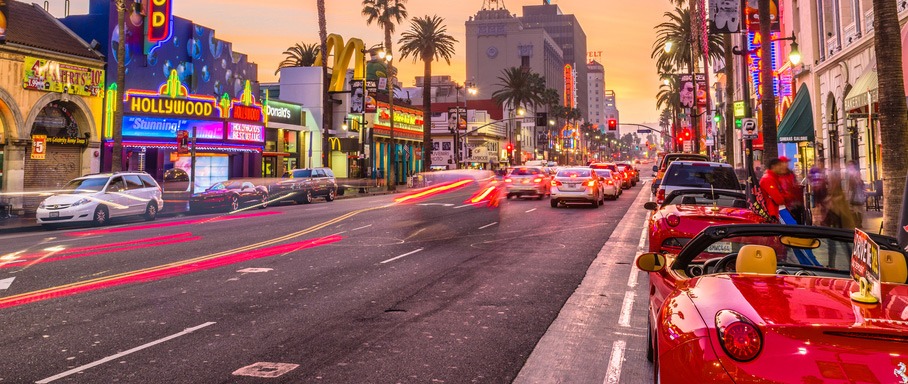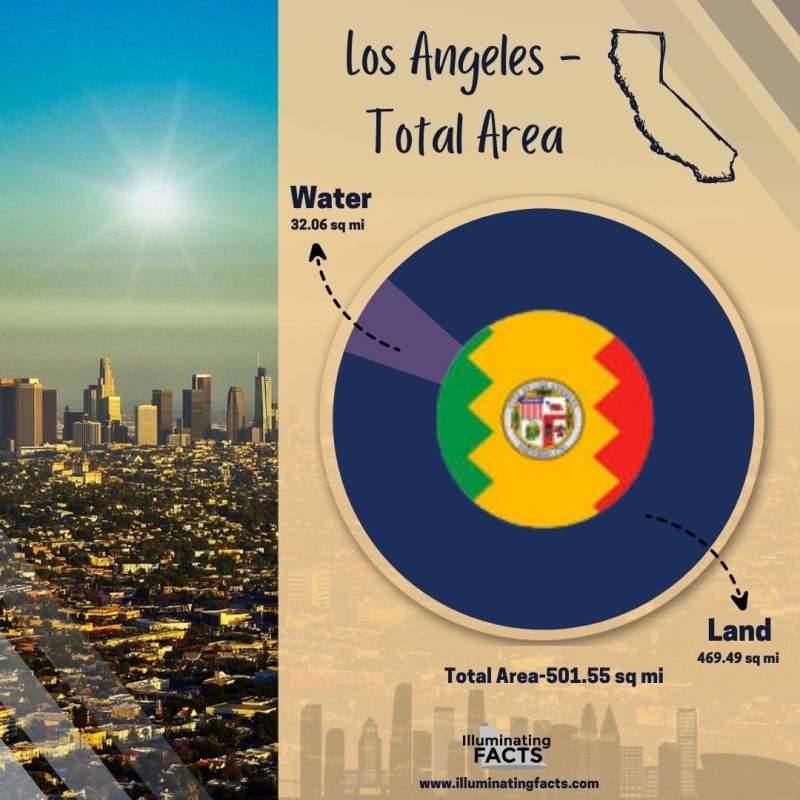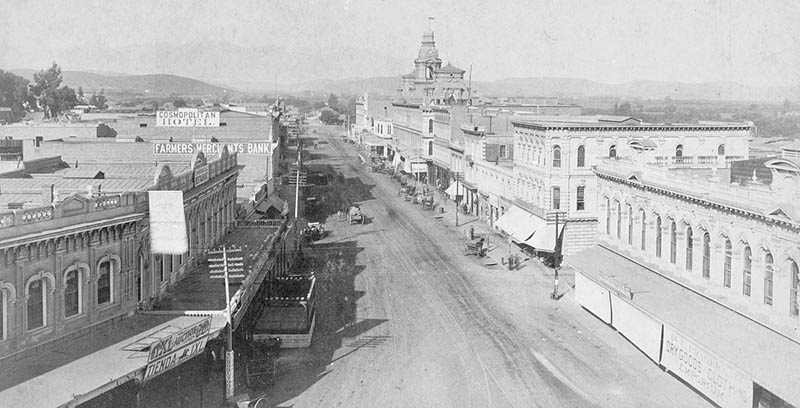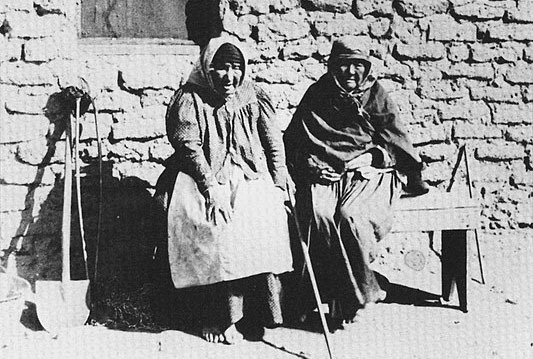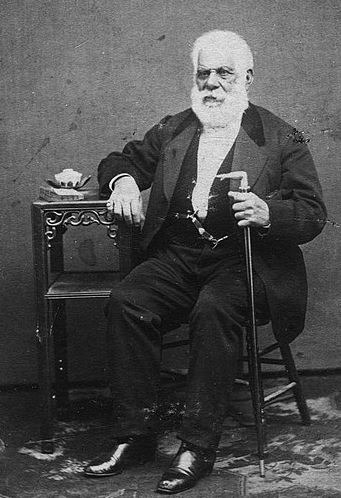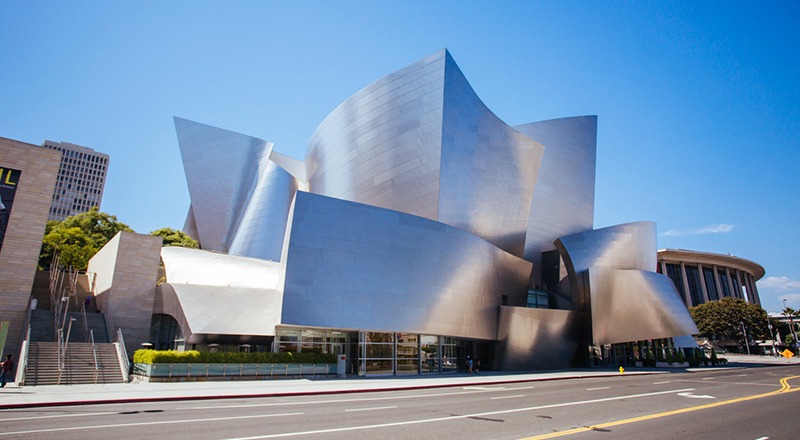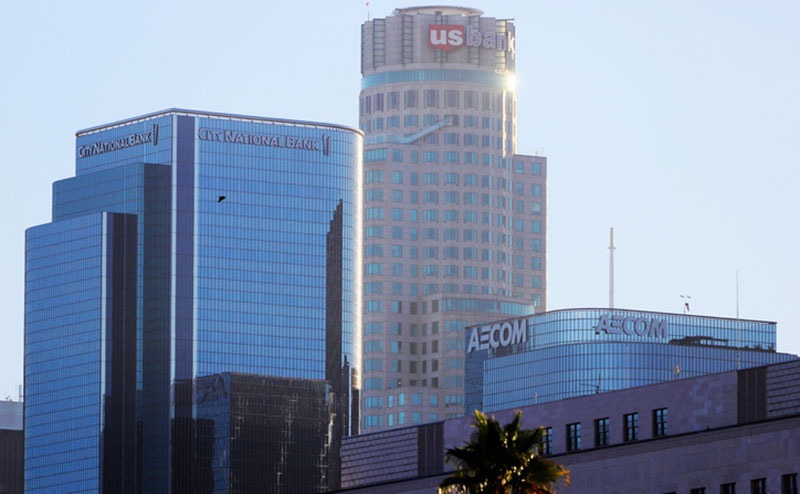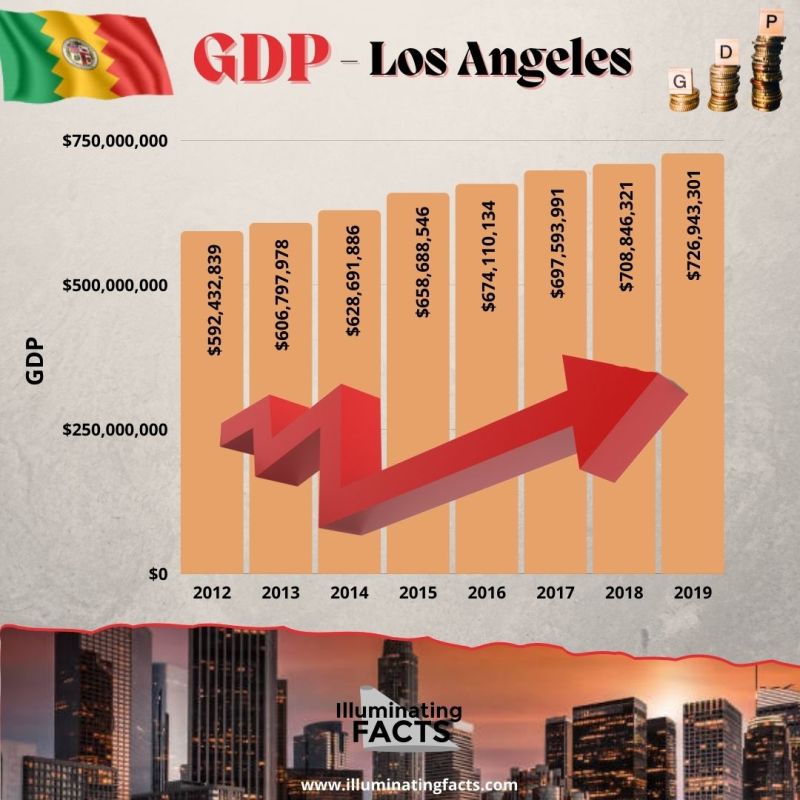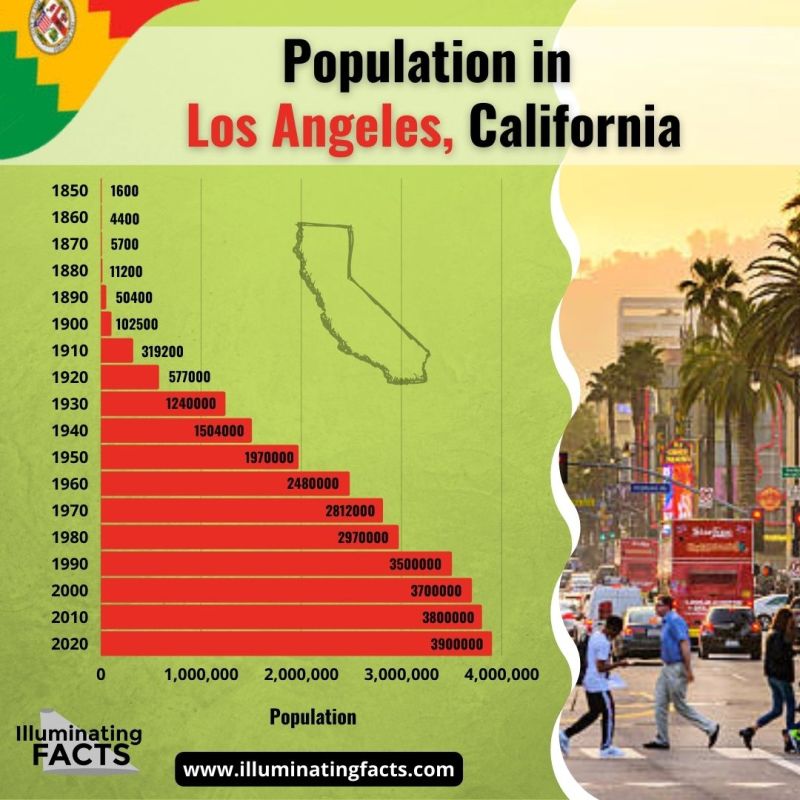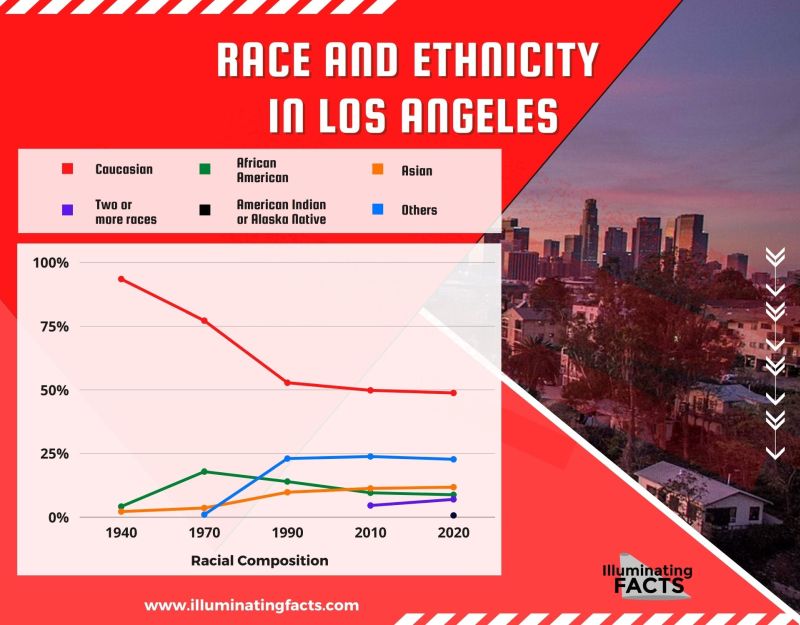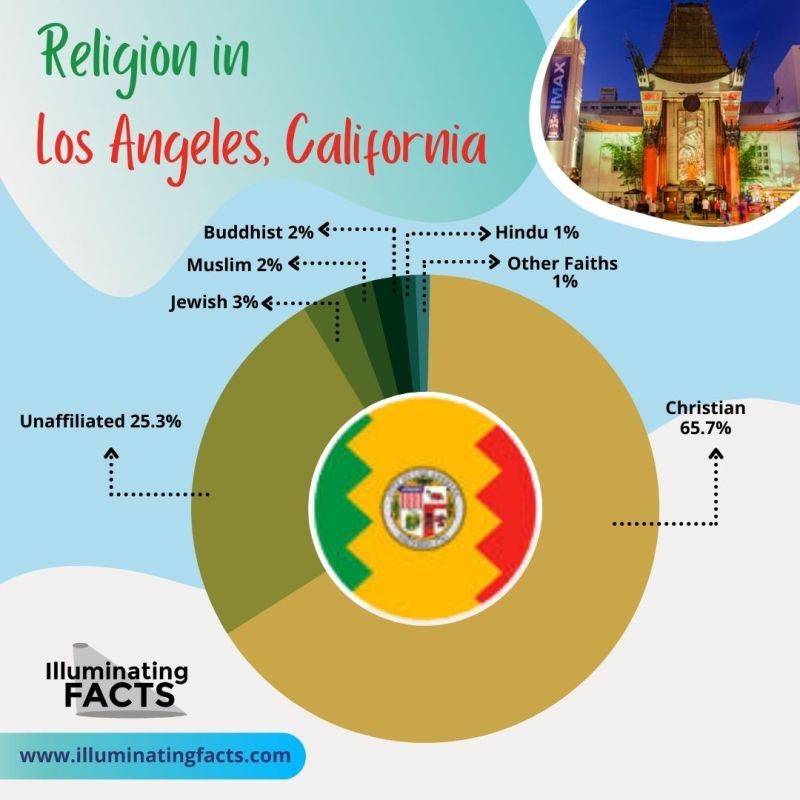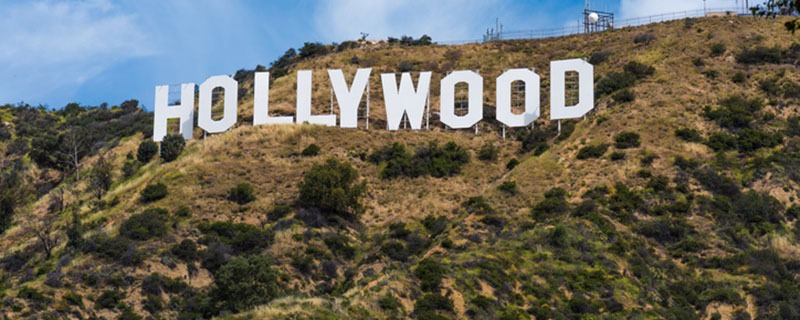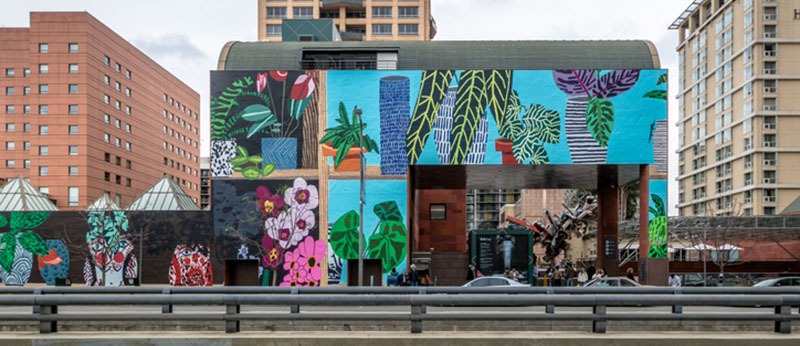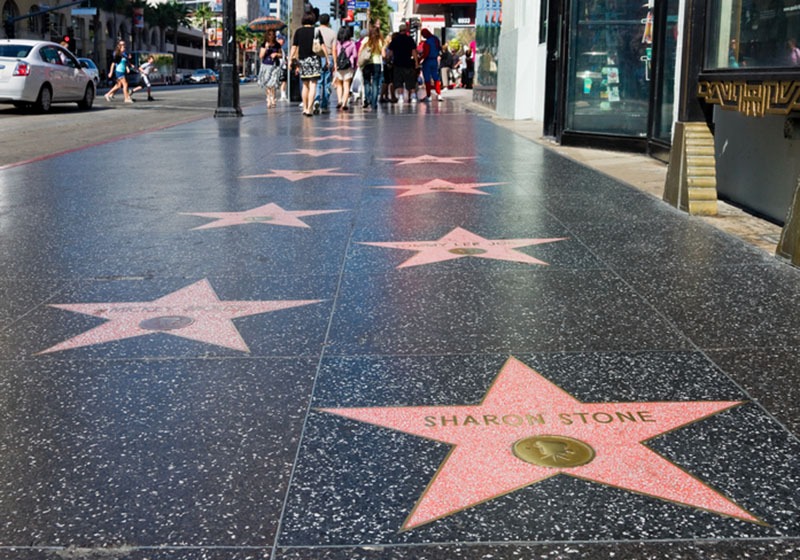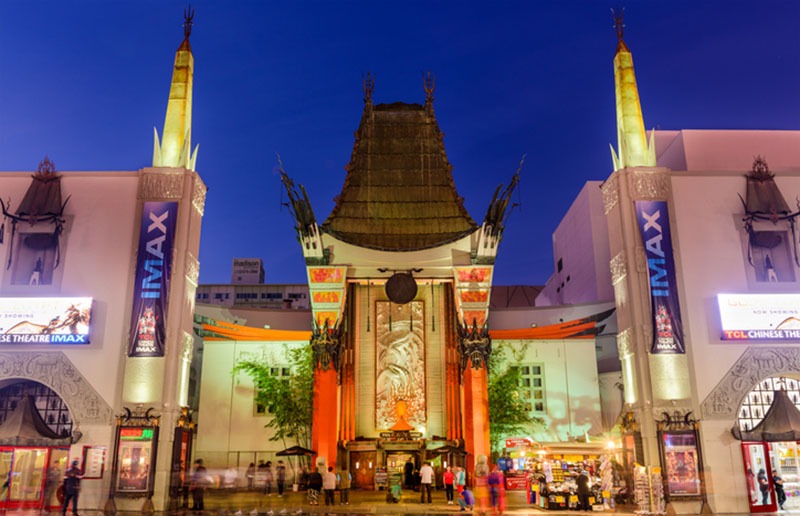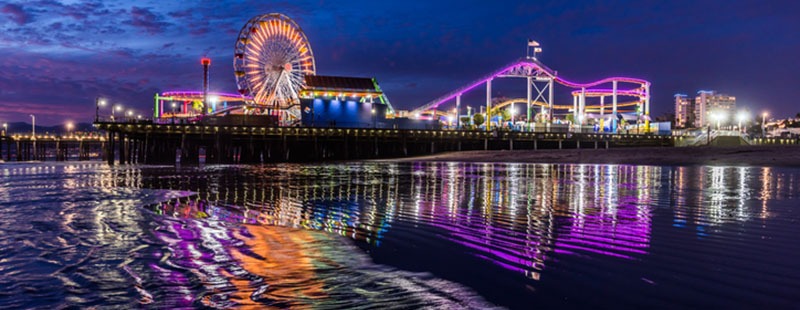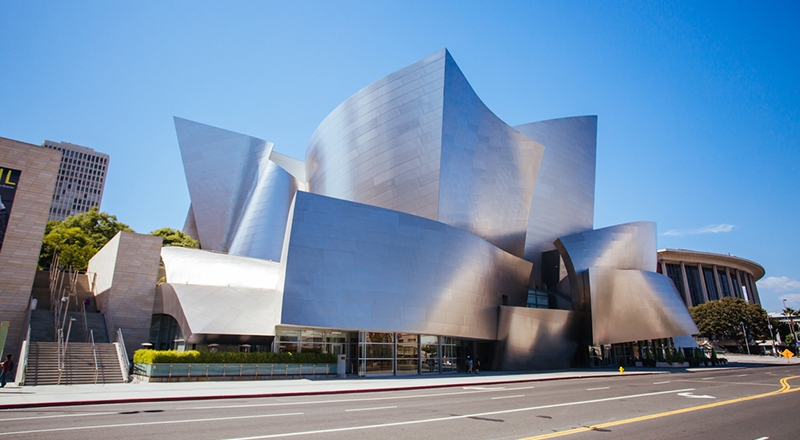Table of Contents
Background
Los Angeles, also known as L.A., is one of California’s largest cities. In fact, it is also the second-largest city in the United States, with a population of 3,898,747 people in 2020. Los Angeles is noted for Hollywood, its wide metropolitan region, entertainment industry, ethnic and cultural diversity, as well as its Mediterranean climate. Moreover, the city of Los Angeles is located in Southern California, next to the Pacific Ocean. L.A. city, which spans about 469 square miles, is also the seat of Los Angeles County. [1]
Geographically speaking, Los Angeles is considered flat and hilly at the same time. In fact, its highest point is Mount Lukens, at about 5,074 feet, which is located in the northeastern part of the San Fernando Valley. Meanwhile, the Los Angeles Basin is separated from the San Fernando Valley by the eastern part of the Santa Monica Mountains, which spans from Downtown to the Pacific Ocean. [2]
Los Angeles City – Total Area
Additionally, the northern area of Mt. Washington to Downtown, the Crenshaw district around the Baldwin Hills, the Eastern areas of Boyle Heights, and the San Pedro district are all mountainous areas of Los Angeles.
Much higher mountains also surround the city. One of them is the San Gabriel Mountains of the north, which are a popular recreation location for Los Angelenos. Mount San Antonio, also known as Mount Baldy, is the highest point in the area, reaching a height of 10,064 feet. With an elevation of 11,503 feet, San Gorgonio Mountain is known as the highest point in the Greater Los Angeles area.

A photo of Los Angeles
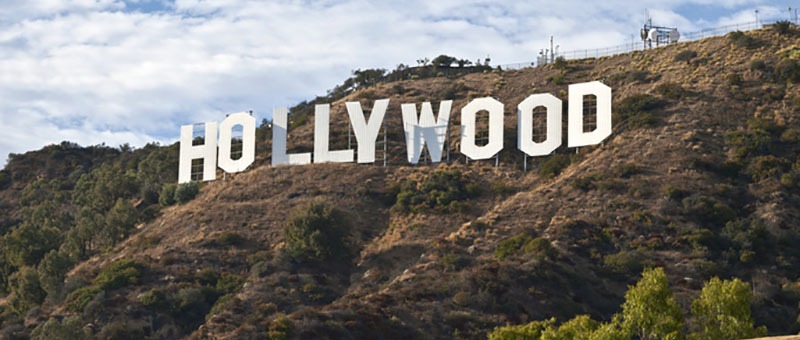
Photo of the Hollywood sign
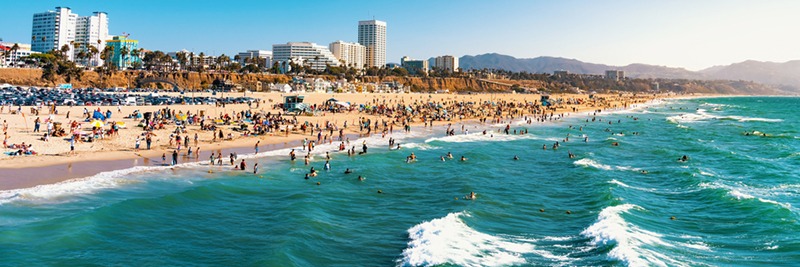
A photo of Santa Monica Beach
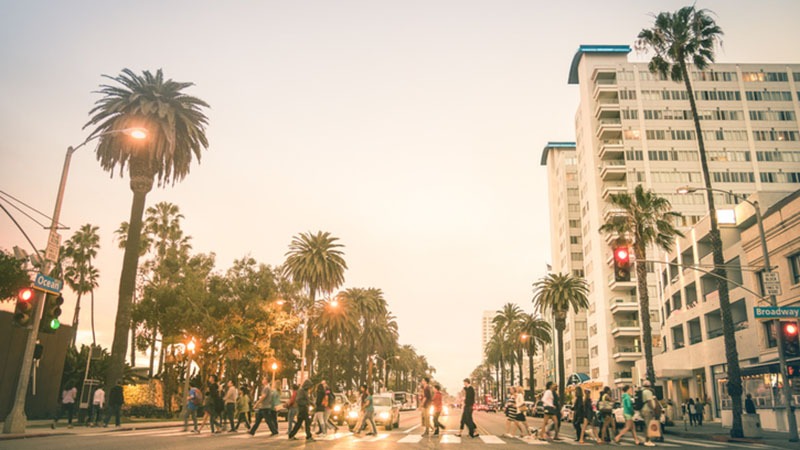
Ocean Avenue, Santa Monica
The Los Angeles County
Los Angeles County, most often abbreviated as L. A County, is one of the most populous counties in California and in the U.S. [3] According to the 2020 census, the County of Los Angeles is inhabited by more than ten million people. Los Angeles, the county seat, is also the most populous city in California. It is also the second-most populous metropolis in the United States, with a population of about four million people. [4]
It is also considered one of the most ethnically diverse counties in the U.S. Aside from that, L.A. County is also the most populous non-state government in the U.S. Its recorded population exceeds that of forty individual states in the U.S. [5]
Moreover, L.A. County has a booming economy, with its $710.9 billion GDP, which is almost equivalent to Saudi Arabia. Interestingly, it is larger than the combined areas of Rhode Island and Delaware at 4,083 square miles or 10,570 km2. Within its vast square miles live more than a quarter of Californians. [6]
History
Los Angeles was home to the Chumash and Tongva tribes before Juan Rodriguez Cabrillo of Spain captured them in 1542. Consequently, on September 4, 1781, the city was founded under Felipe de Neve, who at that time was a Spanish Governor. In 1821, it became part of Mexico following the Mexican War of Independence. Afterward, at the end of the Mexican-American War in 1848, Los Angeles, as well as the rest of California, were purchased under the Treaty of Guadalupe Hidalgo. With that, the area then became a part of the United States of America.
On April 4, 1850, Los Angeles became a municipality five months before California became a state. Upon the discovery of oil in the 1890s, it brought the city into rapid development. Also, another iconic development that allowed the city to grow even further was when the Los Angeles Aqueduct, which transports water from Eastern California, was completed in 1913. [7]
Pre-Colonial History
Source: Unknown author, Public domain, via Wikimedia Commons
During pre-colonial history, the Tongva or Gabrieleos, as well as the Chumash tribes, settled the Los Angeles coastline area. Los Angeles would eventually be built on the site of the town of Iyáanga or Yaanga, or “Yang-an” as spelled in Spanish, which means “poison oak location.” [8]
While on an official military expedition along the Pacific coast from earlier bases of New Spain, Juan Rodríguez Cabrillo, a Maritime explorer, had claimed the area of southern California in 1542 for the Spanish Empire. In the year 1769, Gaspar de Portolà and Juan Crespi, a Franciscan missionary, arrived at the current site of Los Angeles on August 2, 1769. [9]
Under the Spanish and Mexican Rule
Source: Pio Pico, Unknown author, Public domain, via Wikimedia Commons
On September 4, 1781, a group of “Los Pobladores” settlers had founded “El Pueblo de Nuestra Señora la Reina de Los Angeles,” which means ‘The Town of Our Lady the Queen of the Angels.’ [10] Although the original name of the settlement is still disputed, “El Pueblo de Nuestro Senora la Reina de Los Angeles de Porciuncula” was the renowned name listed in the Guinness Book of World Records. However, various sources have shortened and created an alternative version of the longer name. Mestizo, African, and European ancestry also made up about two-thirds of the Mexican settlers.[11]
Meanwhile, in 1821, New Spain declared independence from the Spanish Empire, and the pueblo remained a part of Mexico. Also, during the Mexican administration, Governor Pio Pico designated Los Angeles as the regional capital. [12]
Economy
Los Angeles County has one of the most dynamic economies in the world. With a rapidly growing and enormous high-tech industry, the county has tremendous aerospace and advanced transportation strength. The county also has the nation’s most extensive manufacturing base and the most significant international trade industry.
Economic Status/ Report
The IAE measures the link between a specific economic activity (investment, purchase, operations, and expansion) and its interdependence with other economic sectors. Any type of economic activity affects the number of employment, incomes, and economic production in a given area. Producing job reports for applicants to the EB-5 program is a subset of this sort of study. The following are some recent instances of economic effect studies:
- The Economic Impact of the Broad Museum’s First Year of Operations
- Economic Impact Analysis of the NFL Stadium and the City of Carson
- An Economic Impact Analysis of the Union Station Master Plan
- An Economic Impact Analysis of the Grand Avenue Plan
- Economic Impact Analysis of the LACMA Transformation Project
- Refineries in California are reducing supply, putting industries at risk
- Layoff Aversion Program of the Los Angeles City Workforce Investment Board
- 2014 fiscal year
- The fiscal Year 2013
Los Angeles City GDP
Employment and Unemployment
Los Angeles Payroll jobs increased by 104,300 in August 2021, bringing the total to 16.63 million. California’s monthly job growth was triple the national rate of 0.2 percent, at 0.6 percent.
By the middle of 2021, approximately half of Unite Here Local 11’s 30,000 members had returned to work in hotels, stadiums, and concession stands. Professionals and computer employees who can work from home have been able to keep their employment. In August, California’s labor force increased by 55,300 people, compared to 316,100 a year before. Some firms believe that the expiration of federal unemployment benefits may prompt more people to return to work soon.
Los Angeles has the highest unemployment rate in the state, according to official statistics. The county’s unemployment rate dropped to 9.8% in September, down from 10.1 percent in August. The county’s rate was less than half of the record rate of 13 percent observed a year earlier in September 2020. The two biggest cities, Los Angeles and Long Beach had 8.2 percent and 8.9 percent seasonally unadjusted rates. Compton had the uppermost unemployment rate of 12.1 percent, while Lomita had the lowest at 4.4 percent.
Economic Development Priorities
LAEDC is concentrating on the Strategic Plan’s execution and continuous assistance. The Strategic Plan’s numerous contributors defined seven goals to address the core causes of poverty, sluggish wage growth, and insufficient avenues to a better quality of life. Propel L.A. was created via the involvement of over 500 partners in 26 focus groups. It is to bring together and express the many views of L.A. County’s ten million citizens to advance opportunity and prosperity for everyone. As of 2018, three Fortune 500 firms are headquartered in Los Angeles: AECOM, CBRE Group, and Reliance Steel & Aluminum Co.
This plan is the region’s road map for increasing shared prosperity and raising living standards for the varied inhabitants from all parts of Los Angeles County, although the economy is undergoing significant changes. The Strategic Plan does not address the causes of economic hardship. Instead, the Strategic Plan’s numerous participants have chosen to address the core causes of poverty, such as low wage growth and limited middle-class routes. The resulting goals and initiatives will help the region achieve more excellent living standards.
Population
Over the years, Los Angeles witnessed significant growth in its population. During the mid-19th century, the city was home to less than two-thousand people. As the years passed, more and more people decided to live in Los Angeles, making its population grow exponentially.
Here’s a chart showing the population in Los Angeles from 1850 to 2020:
Racial Composition
Interestingly, Los Angeles is also home to diverse races. Although previously dominated by Caucasian/White Americans, the city gradually became open to other races, making it a well-diverse city.
Here’s the racial composition in Los Angeles, California:
Religion
Religion is a significant part of most countries. The United States is home to various religions, wherein Christianity is the most dominant of all. The city of Los Angeles has its share of religious denominations, which mainly consist of Christians and Roman Catholics.
Here’s a chart showing the various religious denominations found in Los Angeles:
Culture and Arts
Los Angeles is diverse in terms of culture and arts. In fact, this diversity can be seen in several famous museums present in L.A.’s metro area. The Los Angeles Museum of Art, the Hammer Museum, the J. Paul Getty Museum on Santa. Monica and the Museum of Contemporary Art or MOCA are just a few of the famous art museums in the greater Los Angeles area. [1]
Moreover, Will Durant, Ariel Durant, Arnold Schoenberg, and other intellectuals, as well as cinema writers and filmmakers, were cultural representatives during the 1920s and 1930s. As the city grew economically in the middle of the twentieth century, so did its culture.
Hollywood
Hollywood is the most renowned Los Angeles neighborhood located in the heart of its city. This densely inhabited and ethnically diverse neighborhood is known for being the heart of the United States film industry, including multiple historic studios. Also, its name has become the reference for the industry and its inhabitants. [2]
L.A.’s studios have shot everything from classic silent films to the most recent ground-breaking blockbusters in almost a century of filmmaking.
If you are a Hollywood film lover, tours are available from major studios such as Warner Brothers, Universal, and Paramount Pictures. Along with those studios, the New Beverly Cinema, owned by Quentin Tarantino, also offers classic and cult films on 35mm and reels from his personal collection for those that are more indie-minded.
Moreover, many renowned spots from cinema and television can be found while exploring the city. Union Station in downtown Los Angeles, The Bradbury Building, Hollywood Roosevelt Hotel, and Ennis House are just a few of the city’s most well-known filming locations. Los Angeles’ natural landscape is also noteworthy, from Santa Monica Beach (as shown in Baywatch) to Vasquez Rocks (as seen in Star Trek).
Although Los Angeles remains the most important center for film production, Hollywood has become more international. However, it now faces increased competition from other parts of the United States, as well as Canadian cities and numerous other countries around the world, which offer lower production costs to Hollywood.
Music
Los Angeles is also the primary center for famous music industries around the world. This is exemplified by the Capitol Records building, which is shaped like a stack of L.P.s. Also, A&M Records, another famous American record label, is housed in a Charlie Chaplin-designed facility off Sunset Boulevard. In addition to their film company, Warner Brothers also established a significant addition to the recording industry. Also, Local Rhino Records initiated a reissue boom by going through archives of ancient records and repackaging them for current consumers. [3]
Los Angeles also had a vibrant African-American musical community. In fact, a number of great talents, including Charles Mingus, Buddy Collette, and Gerald Wilson were famous during the 1930s and 1940s.
Interestingly, L.A. has several world-class venues. Some of these famous locations were the Dolby Theatre and the Nokia Theatre, where the Oscars are held each year. Aside from those famous venues mentioned, Walt Disney Concert Hall is also an architectural marvel. The great weather in California allows outdoor concerts at the Hollywood Bowl, Greek Theatre, and John Anson Ford Theater.
If you are looking for a much more intimate venue, you could also check out Los Angeles’ classic settings, such as the Hollywood Palladium, The Wiltern, or Roxy. These venues are known for live recordings by musicians like Frank Zappa, Bob Marley, and Bruce Springsteen.
Literature
Aside from music, films, and museums, Los Angeles is also known for its literature. The Los Angeles Review, The Santa Monica Review, Slake, and Black Clock are among the many independent bookstores in the county. The architecturally acclaimed Central Library is one of the numerous public library branches in Los Angeles. [4]
Legendary authors like Raymond Chandler, whose stories were set in pre-war and immediate post-war, have become a part of the city’s literary past. Ross Macdonald continued the Chandler tradition into the 1950s, fusing it with classical tragedy themes in the 1960s and 1970s. Local successors to Chandler include Walter Mosley, James Ellroy, and Joseph Hansen. Moreover, The Day of the Locust, a novel by Nathanael West, depicted a raw side of the Hollywood dream. After relocating to the city in 1934, Ray Bradbury began writing science fiction. In recent years, Carrie Fisher made a name for herself as a novelist.
Poetry and screenplays have also become an integral part of Los Angeles literature. Charles Bukowski was a well-known local poet who spent most of his time in Hollywood but eventually moved to San Pedro. Also, L.A. scriptwriters have written tens of thousands of screenplays. Many authors, like F. Scott Fitzgerald, Aldous Huxley, Evelyn Waugh, William Faulkner, and Tennessee Williams, were drawn to the city by the movie industry.
Museums
In the city of Los Angeles, there are 193 museums and art galleries. In fact, there are more museums in this metropolis than in any other city and place in the world. [16] LACMA, one of the largest art museums in the western United States, the Getty Center, and the Natural History Museum of Los Angeles are all worth seeing. [17] The California African American Museum, The Craft Contemporary, and various sculpture gardens across the city, including those at the Franklin D. Murphy Sculpture Garden and the American Jewish University, are among the minor art institutions in the city. Moreover, other private art collections like Eli Broad’s and the Frederick R. Weisman Art Foundations are still open to the public. [5]
During the Fall of 2011, a series of shows, primarily funded and directed by the Getty Center, documented the growth of Los Angeles as an art capital for the first time at all major museums.
Tourist Destination
Los Angeles is known for its many popular and recognizable landmarks. From the Hollywood sign, Santa Monica Pier, the magnificent Grauman’s Chinese Theatre, to the impressive Disney Hall, these landmarks define Los Angeles among other cities in the world. Given that Los Angeles had these wonderful sites and had stars in so many films, as well as in TV Shows, the city is full of visitors from around the world. [18]
Aside from its treasured entertainment heritage, Los Angeles is also filled with places for fashion, technology, and art. In fact, the art scene is quite huge in L.A., with its 225 theatres and 148 museums. With that, many galleries, theatres, and museums can be found around this busy yet wonderful city.
Below are the most famous attractions that visitors go to for sightseeing and photo opportunities.
Landmarks
Hollywood Sign
When visiting Los Angeles, one can’t miss the Hollywood sign – the city’s most famous landmark. Interestingly, it did not originally sit there as it spells out its name today. When it was first constructed in 1923, the sign read Hollywoodland; later the sign was shortened to Hollywood. Standing about forty-five feet in white capital letters, the Hollywood sign is also known as the city’s, as well as the world’s, symbol of hope and opportunities. [19]
However, since this famous sign is visible across the Los Angeles basin, it has been the frequent target of vandalism as well as pranks for almost a decade. With that, the installation of security cameras and restoration are done to deter mischief. In fact, a non-profit organization called “The Hollywood Sign Trust” is in-charge of the sign’s promotion and protection. [20]
Hollywood Walk of Fame
With over 50 million tourists visiting Hollywood each year, another well-known landmark is the Hollywood Walk of Fame. This landmark, which extends a mile along Hollywood Boulevard and Vine, features about 2 500 terrazzo stars on the sidewalk. In Los Angeles, crouching down with one’s favorite celebrity star is a long-standing tourist ritual. [21]
Even though the famous stars in front of Grauman’s Chinese Theatre, as well as in Hollywood & Highland, attract the most attention, the entire Walk of Fame has plenty of old and new stars for real stars and fictional characters.
Grauman’s Chinese Theatre
Another must-see location among Los Angeles landmarks is Grauman’s Chinese Theatre or the TCL Chinese Theatre. Its beautiful front and the Forecourt of the Stars, where many renowned performers’ hands and footprints have been etched, is also one of the most famous locations for tourists who visit Hollywood. [22]
Located on Hollywood Blvd., the Grauman’s Theatre features a forecourt that bears the handprints, footprints, and signatures of the most famous motion picture stars from the year 1920 to the present.
Santa Monica Pier
Another symbol of Los Angeles is the Santa Monica Pier, which is located on Colorado Avenue in Santa Monica. The pier, which is home to the Pacific Park’s solar Ferris Wheel, is frequently featured in films and television shows.
The Ferris Wheel, as well as the neon gateway to the pier with its backdrop of rides, are popular selfie places. However, the emergence of the Santa Monica Route 66 End of the Trail Sign has become the recent selfie spot on the pier. It was installed in the year 2009 to honor the pier’s 100th birthday.
Walt Disney Concert Hall
Frank Gehry’s ship, made out of stainless steel, waves down the Grand Avenue of 2nd Street and is the famous Walt Disney Concert Hall. This Los Angeles wave-like structure has become one of LA’s most renowned and photographed destinations since its opening in 2003. Interestingly, audio tours are offered, and you can also explore and climb around the building.
Because the entrance faces northeast, the perfect time to photograph it is during the mid-summer mornings or twilight, after the sunset.
Interesting Facts About Los Angeles
- Los Angeles is a charter city, as opposed to a city governed by general law.
- The Los Angeles City Council and the mayor of Los Angeles, who operate under a mayor-council system, as well as the city attorney and controller, make up the elected government.
- There are 15 council districts in the city.
- The city of Los Angeles’ charter, which was passed by voters in 1999, established a system of advisory neighborhood councils to represent a diverse range of stakeholders, defined as individuals who live, work, or own property in the community.
- There are around 90 neighborhood councils throughout the city.
- California State Assembly, Los Angeles is divided into fourteen districts.
- The California State Senate is split into eight districts.
- The United States House of Representatives is split into ten congressional districts.
Sources
- The History of the Sign | The Hollywood Sign
- Hollywood Sign Trust | The Hollywood Sign
- James Bond star Daniel Craig gets Hollywood Walk of Fame star – BBC News.
- 24 Top Tourist Attractions in Los Angeles (with Map) – Touropia
- 21 Amazing Los Angeles Landmarks For Your 2021 Bucket List (travel2next.com)
- Top 10 Things to Do in Los Angeles – Top 10 Things to Do (introducinglosangeles.com
- Los Angeles – Discover the Arts, Culture and History of L.A. (lafilm.edu)
- Hollywood – Wikipedia
- Culture of Los Angeles – Wikipedia
- Gossip Rags Aren’t The Only Things We Read: In LA, Local Bookstores Make the A-List | LAist
- 20 Best Arts And Culture Places To Visit In Los Angeles – Los Angeles Startups & Tech (lastartups.com)
- U.S. Census Bureau QuickFacts: Los Angeles city, California
- Elevations and Distances (archive.org)
- Largest counties in the U.S. 2017, by population | Statistic (archive.org)
- 2020 Population and Housing State Data (census.gov)
- Newsroom: Population: Census Bureau Releases State and County Data Depicting Nation’s Population Ahead of 2010 Census (archive.org)
- Just 31 counties account for one-third of the U.S. GDP – Los Angeles Times (latimes.com)
- Subterranean L.A.: The Urban Oil Fields | Getty Iris
- 1500 California Place Names: Their Origin and Meaning, A Revised Version of … – William Bright – Google Books
- PacificaHistory – Portola Expedition 1769 Diaries (archive.org)
- Settlement of Los Angeles (laalmanac.com)
- Ooh L.A. L.A.:The next time someone puts… (latimes.com)
- Pio Pico, Afro Mexican governor of Mexican California | African American Registry (archive.org)
-

